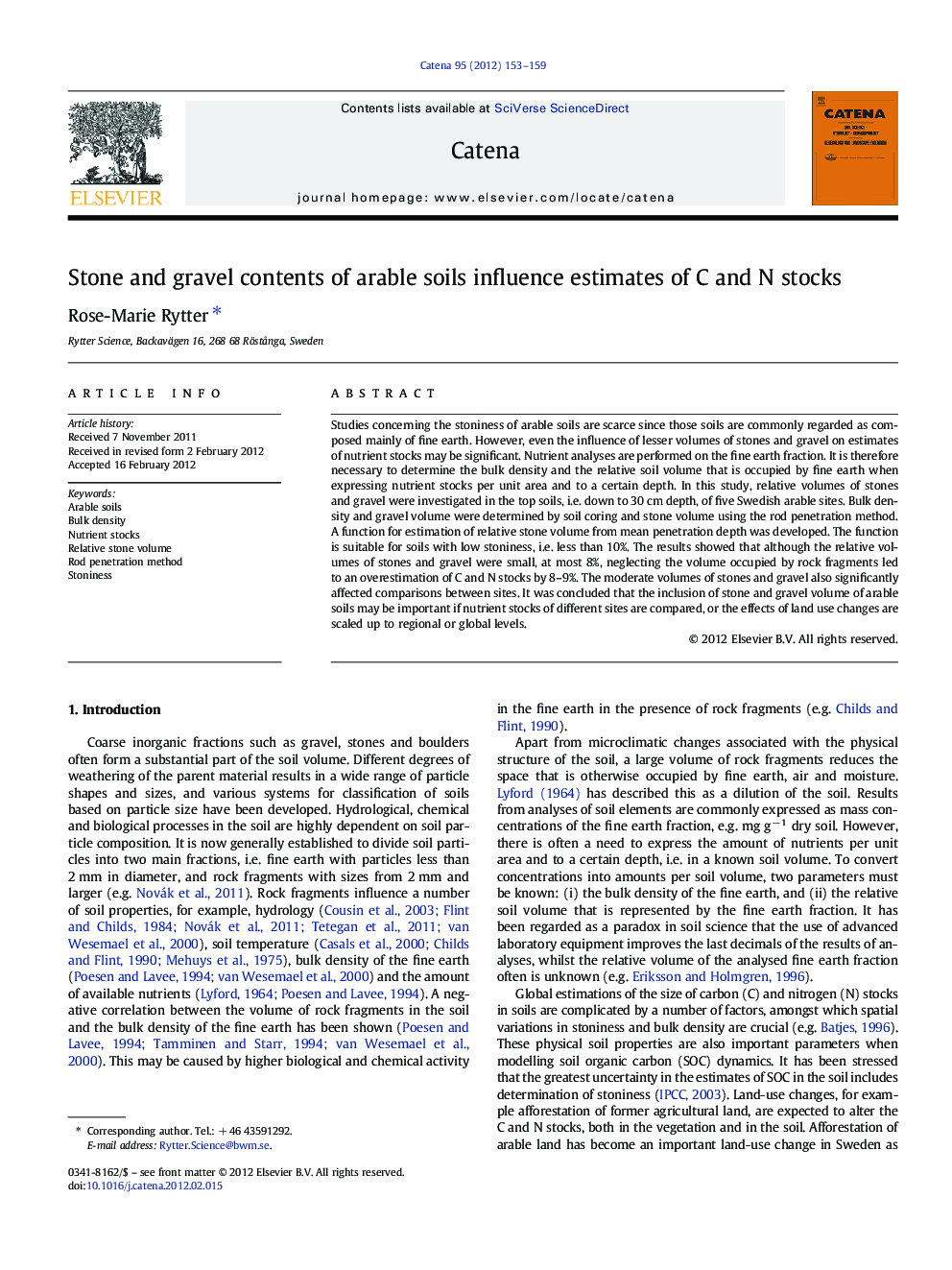| Article ID | Journal | Published Year | Pages | File Type |
|---|---|---|---|---|
| 4571831 | CATENA | 2012 | 7 Pages |
Studies concerning the stoniness of arable soils are scarce since those soils are commonly regarded as composed mainly of fine earth. However, even the influence of lesser volumes of stones and gravel on estimates of nutrient stocks may be significant. Nutrient analyses are performed on the fine earth fraction. It is therefore necessary to determine the bulk density and the relative soil volume that is occupied by fine earth when expressing nutrient stocks per unit area and to a certain depth. In this study, relative volumes of stones and gravel were investigated in the top soils, i.e. down to 30 cm depth, of five Swedish arable sites. Bulk density and gravel volume were determined by soil coring and stone volume using the rod penetration method. A function for estimation of relative stone volume from mean penetration depth was developed. The function is suitable for soils with low stoniness, i.e. less than 10%. The results showed that although the relative volumes of stones and gravel were small, at most 8%, neglecting the volume occupied by rock fragments led to an overestimation of C and N stocks by 8–9%. The moderate volumes of stones and gravel also significantly affected comparisons between sites. It was concluded that the inclusion of stone and gravel volume of arable soils may be important if nutrient stocks of different sites are compared, or the effects of land use changes are scaled up to regional or global levels.
► Stone and gravel contents of arable soils influence estimates of C and N stocks. ► Neglecting the volume occupied by rock fragments led to an overestimation of soil nutrient stocks. ► Stoniness of arable soils is generally lower compared to forest soils. ► A reference function for prediction of stoniness of arable soils was developed.
